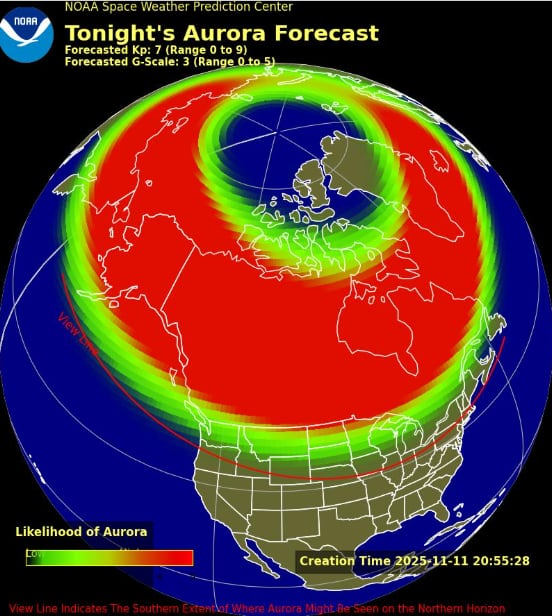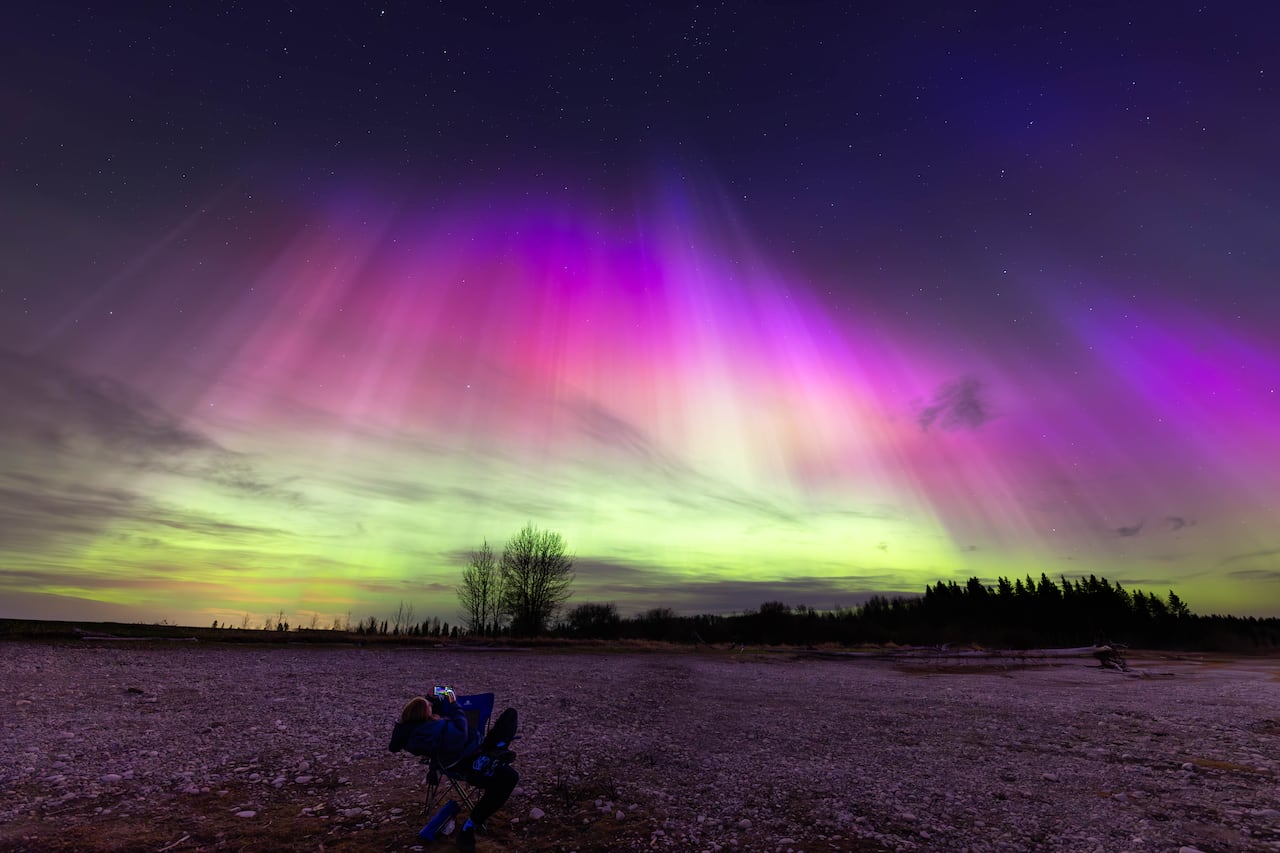Listen to this article
Approximately 3 minutes
The audio version of this article was created using text-to-speech, an artificial intelligence-based technology.
Space weather forecasters issued a warning Tuesday of approaching severe solar storms that could produce colorful northern lights and temporarily disrupt communications.
Over the past few days, the Sun has released several bursts of energy called coronal mass ejections that could reach Earth Tuesday night and early Wednesday morning.
Potentially strong geomagnetic storms could disrupt radio and GPS communications, forecasters at the US National Oceanic and Atmospheric Administration (NOAA) say.
According to NOAA Space Weather Prediction Center mappingVivid images could be seen across much of Canada on Tuesday and Wednesday evenings, as well as in several US states.
How bright the auroras are and how far south they are visible will depend on when the solar flares get here and how they interact with Earth's atmosphere.

How do the Northern Lights happen?
The Sun is at the peak of its 11-year activity cycle, making light displays more frequent and widespread.
Colorful northern lights have graced the night sky in unexpected places, and space weather experts say there are many more auroras to come.
The Northern Lights are a dazzling spectacle that can be seen in several parts of Canada. According to NASA, we're currently in the middle of solar maximum, meaning 2025 could be a better-than-usual year for viewing the northern lights. Click Play to find out why the Northern Lights form!
The auroras, known as the northern and southern lights, are usually visible near the poles, where charged particles from the sun interact with the Earth's atmosphere.
Skywatchers are noticing the lights deeper in Canada, the United States and Europe because the sun is undergoing a major change. Every 11 years, its poles switch places, causing magnetic vortices and entanglements along the way.
Last year, the strongest geomagnetic storm in two decades hit the Earth, causing light effects across the Northern Hemisphere. And soon after, a powerful solar storm blinded observers in the Arctic Circle as dancing lights appeared in unexpected places, including Germany, the UK, New England and New York.
The surge in solar activity is expected to last until at least the end of this year, although when solar activity will peak won't be known until months after that, according to NASA and NOAA.
How solar storms affect the Earth
Solar storms can bring more than just colorful lights to Earth. When fast-moving particles and plasma crash into the Earth's magnetic field, they can temporarily disrupt the power grid.
Space weather can also interfere with air traffic control radio communications and satellites in orbit. Severe storms can disrupt other radio and GPS communications.
In 1859, a severe solar storm caused auroras as far south as Hawaii and, in a rare event, set telegraph lines on fire. And a solar storm in 1972 could have detonated US magnetic sea mines off the coast of Vietnam.
Space weather experts cannot predict a solar storm months in advance. Instead, they warn relevant parties to prepare days before a solar flare hits Earth.

How to see the auroras
Aurora forecasts can be found on the NOAA Space Weather Prediction Center website or the Aurora Forecasting App.
Consider viewing the aurora in a quiet, dark location, away from city lights. Experts recommend taking in the sky from a local or national park. And check the weather forecast because clouds may completely obscure the spectacle.
Photography with a smartphone camera can also reveal hints of the aurora that are not visible to the naked eye.









